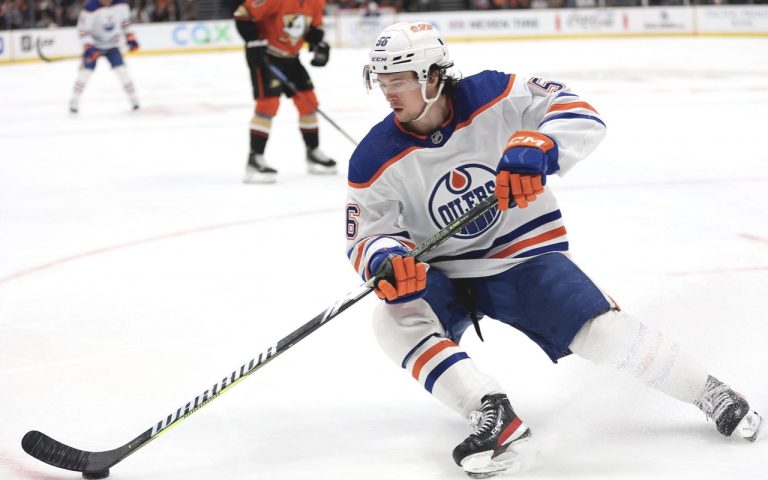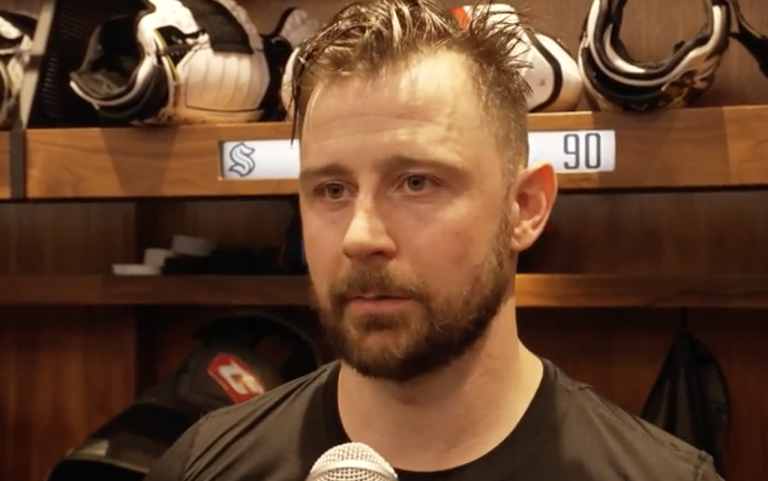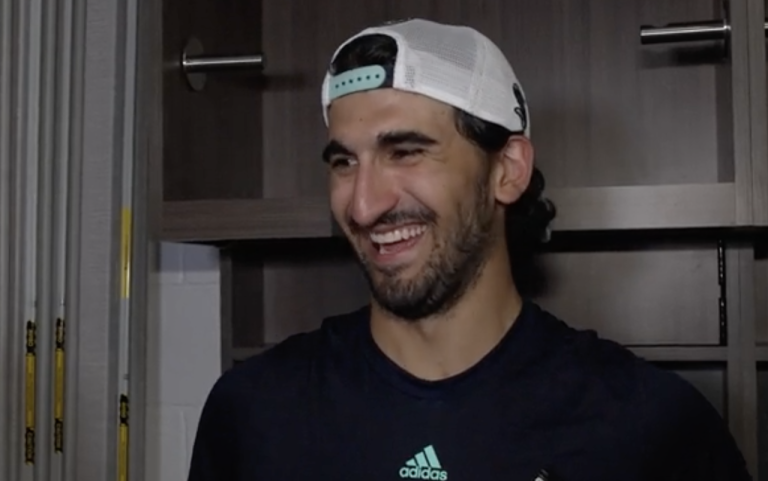One calls it the Pacific Northwest, the other calls it the Lower Mainland, and together it’s the Cascadia Region, but maybe the realm where the Seattle Kraken and the Vancouver Canucks reside should be called the land of the lousy penalty kill.
That’s where they’re living at the moment, with the Kraken ranked 31st in the NHL and the Canucks ranked dead last.
Kraken head coach Dave Hakstol broke his situation down honestly.
“We’ve had good stretches where we’ve been really good, and we’ve gone through a (tough) stretch now,” Hakstol said after practice on Thursday. “I think we’ve probably given up 10 in our last 34 if I’ve got it right. So, we were a little bit better last night. The detail has to continue to be better, right down to, and I’ll give you examples … face-off details, win or loss.
“We gave up a goal last night on our PK off a face-off loss that was too easy in terms of how they got to the net. We missed an assignment. A couple face-offs later on a later PK we did a great job, got a face off win and tried to do too much with it, and didn’t get it 200 feet. So we ended up spending another 20 seconds in our zone. So there’s things that that are continuing to improve, and it’s going to continue to be an area of focus for us. That needs to improve as we continue moving forward.”
On Wednesday night the Calgary Flames went 1-for-4 on the power play and won the game 3-2 against the Kraken. That doesn’t sound horrible but it’s still a 25-percent PP success rate. On Thursday December 22nd in a 6-5 come-from-behind shoot-out win over the Kraken, the Canucks went 1-for-3.
The Kraken survived St. Louis going 1-for-3 on December 20th and beat the Blues 5-2. Two days before that the Kraken gave up two power play goals to the Winnipeg Jets but still managed to win 3-2. That’s living dangerously during a time of year when 5-on-5 play gets tougher and special teams take on a renewed emphasis.
Friday night the Edmonton Oilers visit Climate Pledge Arena. Good luck with that if you’re stuck in the box. The Oilers rip home power play goals with 32.3% of their opportunities. Mind boggling. With the Kraken PK working at just 69.2%, the “stay out of the box” concept becomes imperative to say the least.
Kraken and Canucks
Meanwhile, the NHL worst Canucks (67.3%) gave up two power play goals in a 4-2 loss to the Jets on Thursday night. Plus, Winnipeg tallied on a penalty shot following an Ethan Bear hooking infraction. Vancouver led the game until the Jets man advantage took over in the second period.
Canucks head coach Bruce Boudreau switched it up last season by allowing star players like Elias Pettersson and Quinn Hughes get significant penalty kill time. It gradually improved an PK that had been abysmal in the early season under coach Travis Green, but not by that much. It still finished tied for next-to-last in the league at 74.9%.
We haven’t seen Hughes as much this season. Pettersson has still been working it, mostly on a unit with Bo Horvat, Tyler Myers and Oliver Ekman-Larsson. Travis Dermott, J.T, Miller, speedy Ilya Mikheyev and Luke Schenn were also in the mix on Thursday. Curtis Lazar is supposed to be a factor here.
Assistant coaches Trent Cull and Mike Yeo, the latter with vast NHL experience in many areas, are in charge.
“He’s been a head coach in the NHL which I think is really important,” Boudreau said of Yeo to Vancouver Hockey Insider back in September. “We’re looking at all the best penalty killing teams in the league, Mike is, and he’s not only very good at it, he’s very dedicated to it.”
Right now it’s not working.
When one watches the PK on TV, one should observe whether the group is passive, sitting back and rotating around in their box/diamond formation, or aggressive. The Carolina Hurricanes, the top penalty kill in the NHL last season, attack the points and any puck handler hard. They charge the puck and although they risk open ice on the weak side, more often than not it works.
The San Jose Sharks are worth watching. Despite their poor overall record, they had the second best penalty kill last season and possess the top one percentage-wise right now.
Ultimately it comes down to hard work and of course getting a few good bounces. Blocked shots are obviously key.
Yeo told Vancouver Hockey Insider in September that being aggressive is indeed a key.
“More than ever, the key to a good penalty kill is to spend as little time defending as possible,” he told us. “Number one, you need goaltending, let’s not kid ourselves. You need good structure, you need good sticks, you need good details, but if you’re defending all of the time, the power plays around the league, they’re just too good. Whether it’s the face-offs and getting the pucks down the ice, or making the little plays to get the puck out of the zone efficiently, or the pressure you apply to create turnovers to prevent them from gaining control. That’s the biggest thing, to be aggressive when you have those opportunities.”
Playoff aspirations will die for the Kraken and Canucks with poor special teams. Period.
Both of our regional NHL teams will need to pick up the pace significantly if those hopes are to stay alive.
((This article has been shared with Vancouverhockeyinsider.com))



